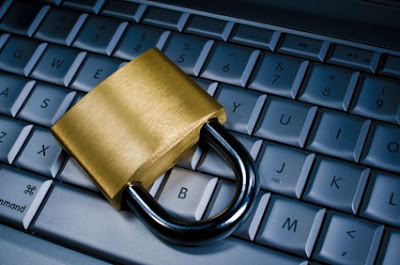A BEGINNERS GUIDE TO KEY-LOGGING
Welcome to a Beginner's Guide to Keyloggers! In this guide I will go through all the common topics that you may need to know. When you finish reading this topic you will know everything you will ever need to get started keylogging. I cover every topic related to keyloggers as well as cover terminology and definitions. I'll explain how a keylogger works and how to even get started making your own! So let's get started!
TABLE OF CONTENTS
Welcome to a Beginner's Guide to Keyloggers! In this guide I will go through all the common topics that you may need to know. When you finish reading this topic you will know everything you will ever need to get started keylogging. I cover every topic related to keyloggers as well as cover terminology and definitions. I'll explain how a keylogger works and how to even get started making your own! So let's get started!
- What is a keylogger?
- Learning the lingo and definitions.
- Common features keyloggers have.
- How do I use a keylogger?
- What is a "stub"?
- What is the "server"?
- What is crypting?
- What is the difference between a stealer and a keylogger?
- What is .net framework and why do I care?
- What are some good keyloggers?
- What are some upsides to keyloggers?
- What are some downsides to keyloggers?
- I want to make my own keylogger. Where do I start?
- I think I've been infected with a keylogger! What do I do?
- Conclusion
WHAT IS A KEYLOGGER?
A keylogger is a program that logs a keyboards keystrokes. It can be used for several purposes, both black hat and white hat. The most common use is black hat. A keylogger functions by grabbing a keystroke, triggered by when the slave presses a key on their keyboard, and saving it to a variable. This process is called "keyboard hooking". It then will take this long variable and send it via a SMTP or FTP server. You can then view these logs and use it for whatever your intention may be. Keyloggers have several different features that I will go into in a later section. The most basic ones only include keyboard hooking and a way to send the logs.
LEARNING THE LINGO
One of the most confusing things about starting something new is not understanding the lingo. If you don't understand the lingo, how will you know what people are talking about? In this section I'll be explaining the common terms people use concerning keyloggers. I'll be going over some other more general things as well.
- Logger
- Slang term for keylogger. See the "What is a keylogger" section.
- Hooks
- Slang term for keyboard hooks. These are also explained in the "What is a keylogger section"
- Keystrokes
- Section of code that is triggered when the slave types something on the keyboard.
- Logs
- Compiliation of all the keystrokes over a period of time.
- FTP
- A webhost that stores files that allows the user to connect and retrieve said files. Files in this case are logs.
- SMTP
- A way that logs are sent via email. Example, MSN, Gmail, Yahoo, etc.
- FUD
- Full Un-Detected. This means that antiviruses will not detect your file as a virus. This will be further explained in the "What is crypting section".
- UD
- Undetected. This means that some antiviruses will not detect your files as a virus, while others will.
- Server
- A server is the output of your keylogger. I will take this in-depth in the "What is a server?" section.
- Crypter
- A crypter crypts your file removing detections. I'll take this in-depth in the "What is crypting" section.
- Detection
- A detection is a term used when an antivirus detects, or thinks your file is a virus. You always want to have the least amount of detections possible to increase your success rate and to reduce errors.
- Black hat
- A black hat is someone who uses their knowledge of computers and security for malicious reasons.
- White hat
- A white hat is someone who uses their knowledge of computers and security for helpful reasons. They help disinfect and improve others security to combat black hat hackers.
- Grey hat
- A grey hat is a mixture between a black and white hat. They will infect innocent people and then help them get rid of it, for free or a price (the latter being more common).
- Backdoored
- When a file is backdoored it has a virus binded to it. This means that the file will act normally and the user will be infected without their knowledge. This has become extremely common in the keylogger section. Always be wary of new releases.
COMMON FEATURES
As I've said before, most keyloggers have two basic settings. Keyboard hooking and log sending (by FTP or SMTP). Most keylogger developers (myself included) like to include more settings to help ease the user experience. Below is a list of common settings you may find, and what they do:
- Icon Changers
- This will change your viruses icon without corrupting it like some third party programs can do.
- MuteX
- MuteX is a unique string that you generate. It helps prevent multiple logs from being sent.
- Add to Startup
- This will add a registry (or other ways) that will cause your virus to start when the computer is turned on.
- Antis
- Antis are a feature that help keep your virus on the slaves computer for as long as possible. They disable or stop certain white hat programs such as antiviruses, sandboxie, and keyscramblers from running or removing your file.
- Disable CMD/Taskmanager/Registry
- This feature will change the registry value for each of these system tools to disable them.
- Logging interval
- This allows the user to chose how often logs are sent.
- Fake Error Message
- This will cause a fake error message to pop up, making it seem less suspicious.
- File pumper
- This will add to the size of your virus. This helps making it seem less suspicious as a game won't be a few kilobytes.
- Assembly Editing
- This allows you to change things found in the properties menu when right clicking a file. This helps it seem more like a real file rather than a virus.
- Encrypted user information
- This encrtyps your information so that others cannot steal it by decompiling your virus.
- Test connection
- This will test your credentials that you've entered to make sure they are correct.
HOW DO I USE IT?
Using a keylogger is a lot easier than it sounds. All you need to do is find one that you want to use, download it, and then chose your settings. Once you have entered all your information and chosen your settings, click the build button. The builder will create your server. This is what you give to people. Give them this file and when they run it they will be infected and you will start receiving logs. Pretty self explanitory. If you ever have a question contact the creator and they should be able to help you.
WHAT IS A "STUB"
WHAT IS A "STUB"
A stub is a separate binary that contains special code that is required for the keylogger to function. There are usually two things in a keylogger. The builder and the stub. Some keyloggers will have a stub built in. A builder takes the information and settings you've chosen and merges it with a stub. The stub contains keyhooks and the workings of each feature. These two merge to create your virus, containing all of the information. I'll cover this file in the next section.
WHAT IS THE "SERVER"
A server is the ouptput of your keylogging builder. It takes your user information (the builder) and the actual malicious code (the stub) and merges the two (via either CodeDOM which I'll explain later in this section, or by filesplitting, which I will also cover) to make one bad ass file. There are several ways that this is accomplished, and both ways have their ups and downs. The server is also what you distribute to infect people. It is your "virus"
CodeDom is a type of building that generates the code during runtime. This allows the user to only have to download one file (just a builder). After inputting your information, the builder will take this and combine it with the malicious code (already inside the builder). This helps lower detection rates, but overall is harder to do, and is harder to reFUD (you have to re distribute the entire builder, instead of just providing another stub).
Filesplitting is the old school way to do things. It requries taking your information (the builder) and combining it with a separate file that contains the malicious code. While this makes it easier to detect, it's easier to update as you can simply give your users another file (same thing, just with less detections).
WHAT IS CRYPTING ?
WHAT IS CRYPTING ?
Crypting can be very complex, though it isn't necessary for you to know all of this information. So for this section I'll keep things to what you need to know. Crypting involves taking a stub (sometimes it's CodeDOM) and using that to FUD (or lower your detection rate) your file. The entire process can get a bit confusing, and I won't bother getting into it. What you do need to know is that crypting can easily corrupt your keylogging sever making it no longer work. A corrupt keylogger may not be detected (the crypter at least did it's job) but it will not send logs making it useless. Because of this you should chose your crypters carefully and it may take a while to find one that works (for free) with your keylogging server. If you are buying a crypter (which I recommend) then be sure to ask the seller to either test or verify your server. In short, crypting is used to lower detection rate, and raise execution rates. That's all you need to know.
About the Author

Follow Me on Facebook Rockstar Basit
Follow Me on Twitter Rockstar Basit
Skype ID : rock.star.rsb






















0 comments:
Post a Comment